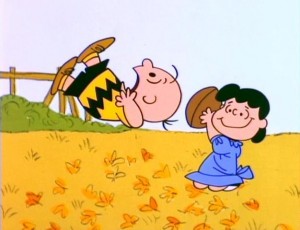 The question came to mind when browsing The Economist‘s style guide, which contains the entry:
The question came to mind when browsing The Economist‘s style guide, which contains the entry:
“Strategic” is usually meaningless except to tell you that the writer is trying to invest something with a seriousness it does not deserve.
But I think that is too harsh, and there are times when we could say a manager is thinking strategically and when she is not. There are two components to thinking strategically.
First, the manager thinks carefully about the goals she wishes her organization to achieve, whether profit or some other mission-related goals, and chooses the set of actions that will most effectively move the organization towards that goal. For the most part this is what we see in an organization’s strategic plan: where do we want to be, and what are the best moves for getting there? The non-strategic arts manager makes investments that do not use resources in ways that are goal-directed; i.e. they are wasteful. To take a simple example, but one very relevant to arts organizations, the key strategy outlined in Michael Lewis’ Moneyball is to hire personnel (or guest artists) based on their likely contribution to the goals of the organization, rather than on feelings about the candidate’s more general talents (especially so if those ‘general talents’ command a high price in the market).
But there is a second part. Lawrence Freedman’s excellent history, Strategy, begins with a quote from Mike Tyson: ‘Everyone has a plan ’till they get punched in the mouth’. Strategic thinking takes account of the fact that other people are not necessarily going to act they way you want them to as you go about implementing your plans. If you start a new business, existing businesses will not simply continue on as usual – they will implement their own strategies for limiting your ability to compete with them. Any strategy you have for getting your employees to take on different tasks, or to do their jobs in different ways, will be met by a reaction that might be something less than blind obedience to your orders. The second key to strategic thinking by arts managers is to anticipate the reactions of employees, customers, competing firms, and state regulators to the actions you are considering, and to choose a path in light of those likely reactions. The notion of getting ‘buy in’ to your strategic plan is not just paying lip service to some abstract ideal, it is necessary for the plan to work. Understand that if employees are to be rewarded according to metrics you have set that cover only a subset of the duties you hope for them to perform, they will focus on the tasks that generate rewards. The strategic manager anticipates reactions.
And, contra The Economist, that does deserve to be taken seriously.
UPDATE: As an example, this suggests Michael Bloomberg, for all of his wealth, is not always very strategic.

[…] People Together to Improve the Place They Love AJBlog: Field Notes | Published 2014-03-26 What does it mean to be a ‘strategic’ arts manager? AJBlog: For What it’s Worth | Published 2014-03-26 The Many Faces of Spring […]